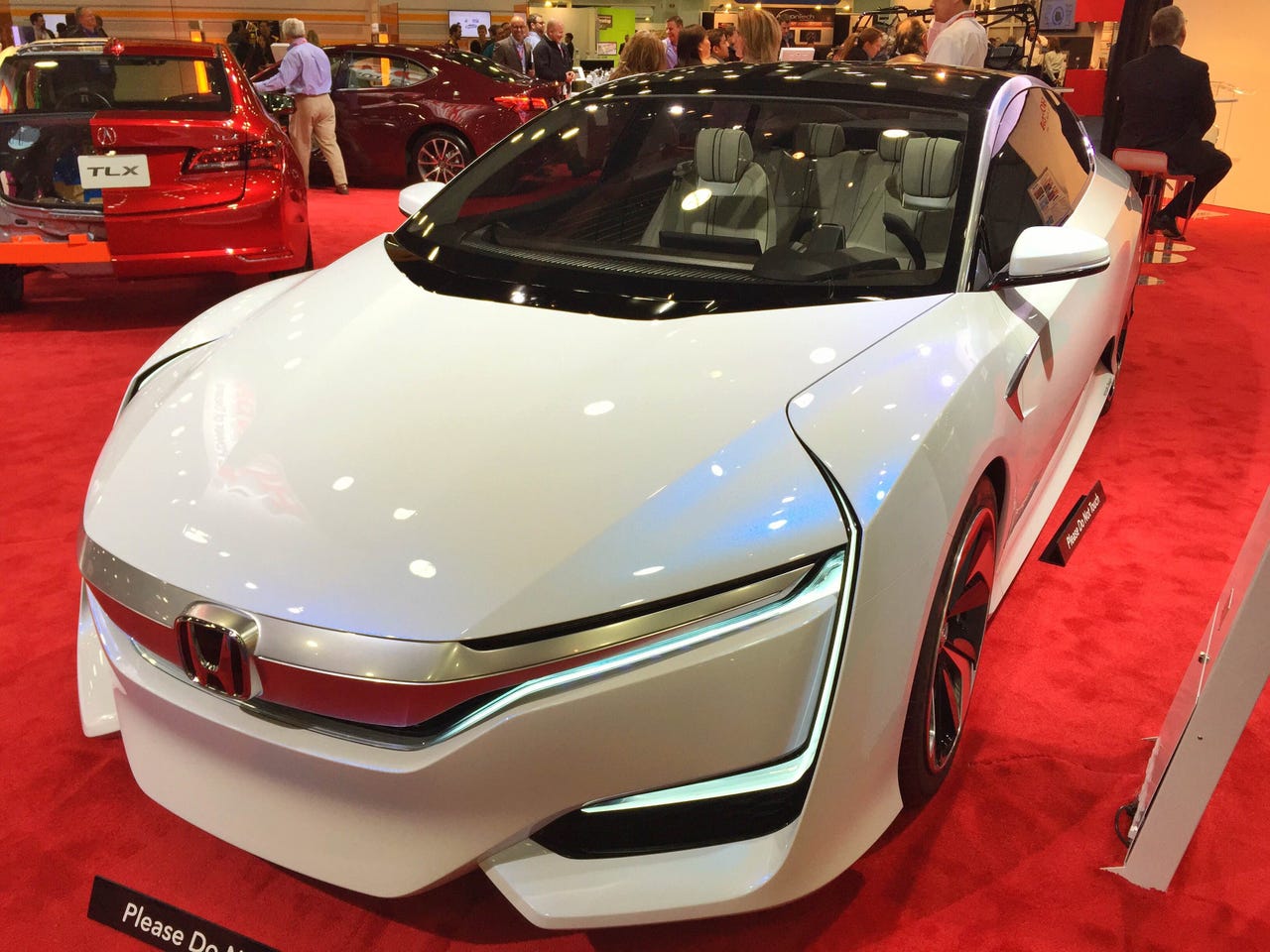A Hyperloop alternative: Honda proposes grid of accident-resistant, clean energy cars that go 180 mph


"[Hyperloop is] a pretty big idea. But here's one that I think is even better because it's centered on the human desire for personal mobility," said Frank Paluch, president of research and development for Honda Americas, at the closing keynote of SAE. "How about a dedicated lane on the I-5 for highly automated, connected vehicles, using swarm technology to travel at speeds upwards of 300kph [180mph]. LA to San Fran in less than two hours. No drive to the train station, and no constraints on when you can come or when you go."
Featured
Paluch stressed that the U.S. should build on its national highway system as an asset to launch a big leap forward in transportation.
"Now take that image beyond the I-5 and apply it to all California's major interstates, working together with super-connected cars and infrastructure and all of a sudden, you've got an effective commuting radius of maybe 100 miles to get to work each day," said Paluch. "In this scenario, your car has become part of a transformed mobility experience, one cell in a national high-speed hyperloop. But one with infinitely more flexibility."
In Paluch's scenario, your vehicle would shift into full automation mode once it took the ramp on to the hyper fast lane on the highway and it would communicate with other vehicles nearby to ensure safety at high speeds. During that time, your driver's seat might swivel around and face the passenger seats when you go into automation mode. But Paluch said Honda still believes in preserving the fun in driving, so that when you "exit the hyper highway, you turn your seat around, turn off the autopilot, and take the wheel so that you can enjoy a wonderful backcountry or coastal drive."
Of course, all of that extra speed would currently require more fossil fuels. Honda is already looking past that as it considers this version of the future.
"Gas is cheap and supplies are plentiful but climate change is happening," said Paluch to the crowd of car people. "At Honda we talk about being a company that society wants to exist and on the basis of that high objective, we're determined to create technologies that move our society beyond the age of oil."
Honda's current approach to that is the FCV, a sedan with an electric engine that's powered by hydrogen fuel cells. It has a range of 300 miles and will be released in 2016 in Japan and in LA. Its precursor, the experimental FCX, is currently available in LA as a lease-only model that includes the vehicle, fuel, maintenance, and insurance for $600/month.Of course, there are a number of caveats to Honda's plan. First of all, it's more of a vision and a discussion-starter than a fully conceived plan like Musk's Hyperloop. It will require a lot of different players with big egos to get on board and build consensus in order to make it work. It will depend on a U.S. government that has underfunded its highway infrastructure to change course and make a major investment.
Paluch sat down with ZDNet in a HondaJet, the new light business aircraft it debuted at SAE, to talk more about its vision for a hyper fast highway system.
"[Governments] want to build something. So why not give them a dream of something to build?" said Paluch. "But we as an industry haven't come up with an actual consolidated vision for what that future looks like. We have to create that vision."
Because Honda was the host of this year's SAE -- it rotates among the major automakers -- the company decided that it wanted to zoom out and do some long term, big picture thinking. So it challenged itself by asking, "What if we made our own Hyperloop? What would the infrastructure have to look like? What would the new business models have to look like? What would the control algorithms have to look like?
"All those questions are being asked right now," said Paluch.
AR + VR
He gets visibly fired up when he talks about this vision stuff. He says that's because this is about more than vehicles or technologies.
"As mobility evolves, so does society. Speed will really transform society," said Paluch. "With suburbs expanding, we can live farther away from the center of town. Now maybe with higher speeds you could live in another city. I could live in Cleveland and work in Columbus... My 35 minute commute now takes me 25 miles. A 35-minute commute in the future could take me 70 miles. It would be a totally different scenario."
That sounds terrific, but again, it's not as clean and self-contained as Musk's solution. And it's very likely that the two concepts -- high speed rail and smart vehicles on hyper highways -- will exist side by side and be an important part of the future of transportation. It will take a lot of consensus building and agreement on standards and advances in technology to build the kind of system Paluch outlined. And that will eat up a lot of innings. It will take years.
"By the time this all happens I'll be retired and living in Florida," said Paluch. "This will be a great way to come back and visit my grandkids in Ohio. Florida to Ohio, ASIMO for a co-pilot, zero emissions, all in 6 hours."